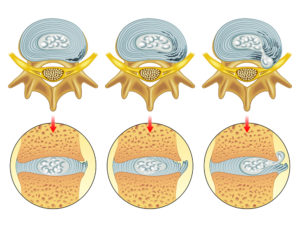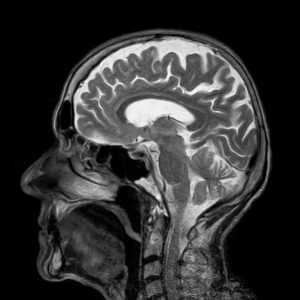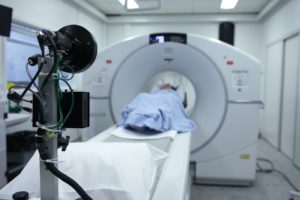I’ve said it before on this site and I’ll say it again – there is a lot of terrible information out there about back pain and sciatica. The aim of this post is to put some of that information right!
Aims of this post:
- To “bust” 10 of the most common myths about back pain and sciatica
- To point you in the right direction to learn the true facts
Before we dive in, please be aware that we are part of the Amazon Affiliate programme. This page may contain Amazon affiliate links, so if you choose to purchase a product for your sciatica that we recommend through a link on this page, we will receive a small commission at no extra cost to you. This helps us keep Overcome Sciatica alive! Thank you for your support. Please be assured that we only ever recommend products that we truly believe can help.
Myth #1 – “Sciatica can never get better”
This is just plain wrong. If this comment was true, my job wouldn’t exist!
While sciatica is a very frustrating condition, it certainly can improve. The difficult part is telling how quickly that improvement is going to happen in each case.
90% of people who suffer sciatica will experience a recovery within 6-8 weeks. Even the 10% who don’t get this initial improvement are unlikely to need surgery for their sciatica.
Try not to panic. There’s lots you can do for sciatica. Start with my Free Expert Information and see if you can find something that works for you.
Myth #2 – “The larger the disc bulge, the worse your symptoms”
Surprisingly, the size of a disc bulge is poorly correlated with someone’s symptoms.
I have seen some scans where a massive disc bulge is picked up incidentally but there is no back or leg pain.
Equally, I have had patients in loads of pain while their scan shows only a very small bulge.

This is one of the reasons why we don’t often recommend MRI scans in the first instance.
There are a lot of factors at play when it comes to pain, including general health, mood and past experiences, so the magnitude of the physical injury is only one piece of the puzzle.
Myth #3 – “Surgery is the easiest way to fix sciatica”
Although this is not true, it is a common misconception.
I see a lot of people thinking that as soon as they have their surgery, everything would be fixed.
People often lament that the NHS should give everyone with sciatica surgery, and the only reason it doesn’t is purely financial. However, this is also wrong.

I have previously written about how the rates of success following surgery are quite poor – with only one third of people seeing a positive outcome.
Unless it is an emergency case, anyone considering surgery should make sure they have tried every conservative measure first before proceeding.
Myth #4 – “You should manage sciatica the same as you manage any other injury”
This is a really common one that I hear in medical circles more than from my clients.
Sciatica is different to an ankle sprain. Anyone suffering from sciatica can tell you that.
Why?
Because in addition to the pain from the physical problem (called somatic pain), sciatica causes chemical pain, due to the chemical reactions that occur around an irritated or compressed nerve root.
When this chemical reaction is present, it takes more than just exercises to strengthen the back and legs to correct the problem.
As the chemical reaction is a whole body event, our treatment needs to target the whole body too. That is why a lot of my posts focus on diet, general health and supplementation.
Don’t trust anyone who says you can fix sciatica with exercise alone!
Myth #5 – “When someone mentions that the brain is involved in back pain and sciatica, what they really mean is it’s all in your head”
This is a really common confusion and is one I hear all the time from clients.
Quite often, it’s our fault as healthcare providers.
What we are referring to is a phenomenon called central sensitisation. This is a process by which the brain and spinal cord are cause pain that is above and beyond the level expected based on tissue damage alone.
So, although it is someone’s brain causing this pain to worsen, we aren’t saying it’s “in their head” or made up.
Central sensitisation is very, very real. It is another whole-body process, which is another reason why we need to take a holistic approach in treating sciatica that has been present beyond 8 weeks.
Are You Looking for RAPID Relief from Sciatica?
My good friend, colleague and fellow international sciatica expert, Dean Volk, has a brand new sciatica relief video course available – and I’m delighted to be an official sponsor!
Check out Dean Volk’s “Kicking Sciatica OUT of the Butt!” Online Pain Relief Course Here!
I can proudly recommend Dean and his course for sciatica sufferers – because I’ve seen his incredible results first-hand. You can check out his course (and get lifetime access to the videos and bonus content) by clicking HERE.
Myth #6 – “I’ve been diagnosed with degenerative disc disease and am doomed to a life with constant pain”
Degenerative disc disease (DDD) is a condition characterised by loss of disc height in the spine, due to the process of aging.
It is completely normal! Everyone has some degree of DDD.
DDD is like wrinkles on the skin. Everyone gets them as you age, no matter what you do.
DDD does not directly cause pain by itself. Usually the pain comes about due to stiffness, poor mobility and inflexibility rather than the physical loss of disc height.
Just remember that in a famous study, 68% of people WITHOUT PAIN over 40 had some degree of DDD.
Myth #7 – “An MRI scan will show the exact cause of my pain”
Unfortunately, this just isn’t the case. MRI scans are great to rule out serious problems, like cauda equina syndrome.
However, although you may see disc bulges and joint problems on an MRI, there is no way to tell if those problems are the CAUSE of someone’s pain or just there incidentally.
Going back to the study I mentioned earlier, pretty much 100% of people over 30 will show some “abnormality” on an MRI scan, even if they are pain-free.
Sometimes, it’s better NOT to get scanned early (and this has actually been linked with poorer outcomes long-term).
Myth #8 – “Core strengthening is the best type of exercise to perform”
I discussed this point in depth HERE.
I don’t believe core exercises hold a tonne of value for back pain or sciatica. There, I said it!
Not to say they are bad… I just think there are better ways to spend your time.
I would recommend first addressing the mobility of the lower back itself, then the flexibility in the legs and the affected nerve.
Myth #9 – “Every time my back hurts, I am making any damage worse”
Luckily, this isn’t true either.
We now understand pain better. We know that pain is actually more of a “warning signal” than a “damage signal”.
Any time your body feels threatened by a movement or action when you have a pre-existing injury, you might feel pain BEFORE you get to the point of damage. It is simply your body’s way of telling you to STOP because it doesn’t like that action!
Don’t worry about mild aches and pains while doing your exercise programme. I always say to my clients anything below a “4/10” on the pain scale is OK!
Myth #10 – “I should go on YouTube and follow the sciatica exercises in the videos”
While the makers of most YouTube videos mean well, showing exercises that commonly work for people with sciatica, most of them jump straight into the “solution” before establishing your “problem”.
Sciatica can be caused by many different problems.
What may help one person with a particular problem may make another person with a different problem ten times worse!
It is important to establish a method of working out which movements and exercises are safe for YOU on an individual basis before diving into any exercise programme.
I have had many a client who has really exacerbated their symptoms by following YouTube exercises – which is such a shame because they are being proactive in trying to help themselves!
Seek out some advice for YOUR particular situation before drawing yourself a plan to follow.
Summary
I hope you’ve found this list on the common myths in back pain and sciatica interesting. It may have even prompted you to challenge your own beliefs about these conditions.
Trying to get better from back pain or sciatica can be really confusing. It’s always best to ask for help from a trustworthy professional if you aren’t sure about what to do next.
If you’ve enjoyed this article or would like to read another 10 myths to do with back pain and sciatica, why not let me know in the comments section below?
Are You Looking for RAPID Relief from Sciatica?
My good friend, colleague and fellow international sciatica expert, Dean Volk, has a brand new sciatica relief video course available – and I’m delighted to be an official sponsor!
Check out Dean Volk’s “Kicking Sciatica OUT of the Butt!” Online Pain Relief Course Here!
I can proudly recommend Dean and his course for sciatica sufferers – because I’ve seen his incredible results first-hand. You can check out his course (and get lifetime access to the videos and bonus content) by clicking HERE.
The information on Overcome Sciatica should never be used as a substitute for medical advice from a doctor. Never put into action any tips or techniques from Overcome Sciatica without checking with your doctor first. Please see full terms of use here.







Fantastic information – it really helped to have some of the myths busted I’ve been peddled over the years! Your blogs are SO amazingly encouraging because they are so practical. Thank you!!
Thanks so much for your comment!
The information that was provided to me was very interesting I’ve notice since I have not been exercising that you was diagnosed with sciatica The smartest answers are to be know fact That it’s an continues thing through out your life So I wanna say thank you and I’m very appreciative of the info